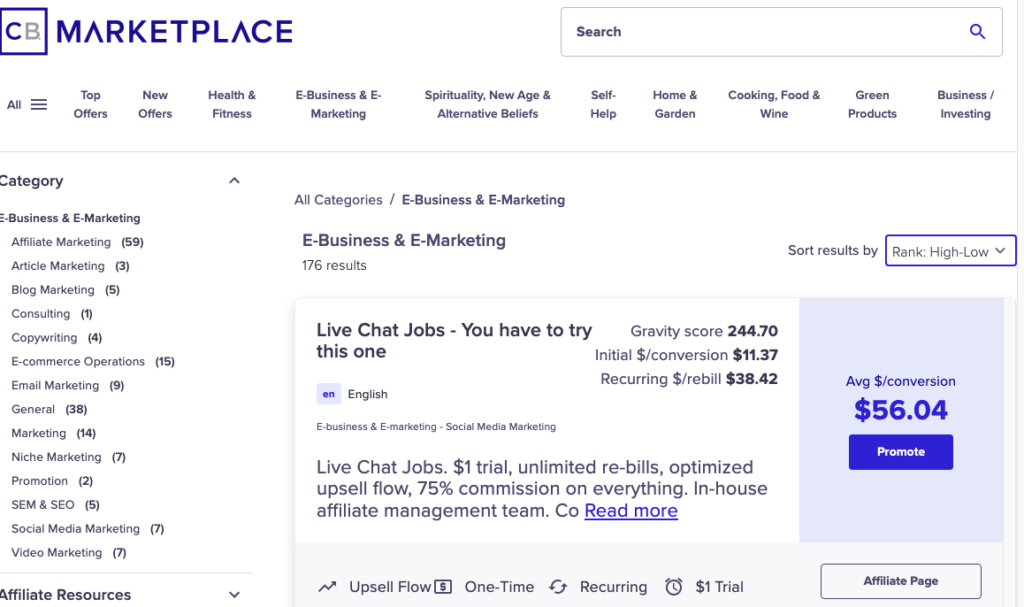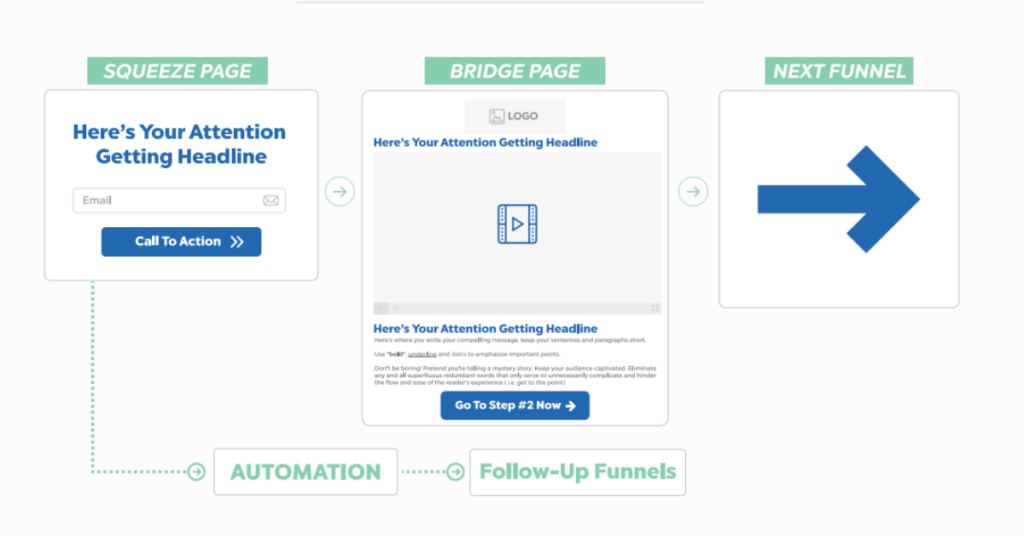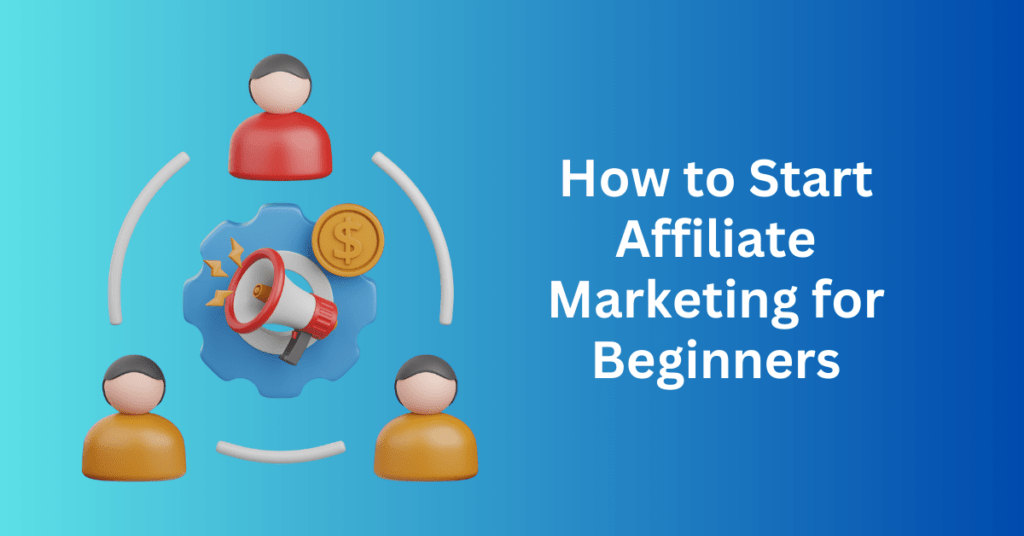You may have already come across affiliate marketing. A low-risk, low-cost, and highly lucrative avenue for generating revenue. This proposition is particularly appealing to aspiring entrepreneurs seeking a reliable source of supplementary income or individuals eyeing a full-time role in digital marketing.
However, is there more depth to this marketing strategy?
Affiliate marketing stands as a huge industry, with global spending projected to reach a staggering $15.7 billion in 2024, underscoring its widespread adoption. An impressive 81% of advertisers have embraced affiliate marketing strategies, relying on individuals like you to curate content that promotes their products or services.
Despite this, the popularity of affiliate marketing has given rise to a saturated market. Nearly every blogger and influencer engages in sponsored content for additional income, but not all have invested the time in strategic research and planning necessary for sustained success.
This guide is tailored for those seeking a competitive edge to thrive in the dynamic landscape of affiliate marketing.
What is Affiliate Marketing?

The appeal of affiliate marketing lies in its straightforward approach. By enrolling in an affiliate program, integrating sponsored links into your content, and earning commissions when readers make purchases, the process remains uncomplicated.
Whether you are promoting physical or digital products and services, the mechanics stay consistent. Affiliate marketing thrives across diverse content mediums, allowing you to cultivate a blog, establish a social media presence, or captivate an audience through video production. A fundamental requirement is a platform to host the links, commonly achieved through a WordPress affiliate marketing website.
While specialized skills aren’t strictly mandatory, proficiency in communication and digital media proves beneficial in expanding your audience. Crafting strategic content that sparks interest is important to your growth. This comprehensive guide aims to equip you with affiliate marketing strategies applicable regardless of your background.
Furthermore, the experience gained in affiliate marketing opens doors to various digital industries such as writing, editing, publishing, marketing, and sales. Establishing yourself as an adept creator, communicator, or salesperson can pave the way for a lasting career or even the development of a flourishing affiliate marketing business.
Start Your Affiliate Marketing Website with Bluehost Hosting
How Much Money Will You Make in Affiliate Marketing?

When starting your affiliate marketing business, it’s crucial to understand the potential earnings and dynamics within the industry.
For those seeking a salaried position, the average annual pay for an in-house affiliate marketer typically hovers around $82,000. However, the landscape for most affiliate marketers is characterized by freelancers, with a substantial portion earning $10,000 or less per year. Hence, it is advisable to have a primary income source when starting as an affiliate marketer.
Your affiliate income revolves around the effectiveness of your links. On average, the conversion rate for affiliates is 2.4%, and commissions typically range from 10% to 30%. In select industries like Software as a Service (SaaS), the commission rates can soar to 70%.
To illustrate, if you achieve the industry-average conversion rate, for every 100 clicks on your affiliate link, two individuals are likely to make a purchase. Assuming you’re promoting a $100 product with a 20% commission rate, you would earn $40 for every 100 clicks.
Some advance marketers have surpassed the $100,000 annual income mark through substantial growth, amassing significant click-through rates, and negotiating lucrative deals with top-tier partners. However, it’s important to note that, until reaching such heights, affiliate marketing is most effective as a passive income stream complementing your primary source of revenue.
How to Get Started with Affiliate Marketing
Getting started in affiliate marketing is simple. Join an affiliate program, get your unique link and start promoting. However, there are details in each step that will affect your success rate. Let’s see step by step how to start your successful affiliate marketing business.
Step 1: Choose A Niche
Selecting a niche is an important decision that significantly influences your affiliate marketing success. Begin by introspectively examining your passions, interests, and areas of expertise. Ideally, your chosen niche should align with your genuine interests. This enthusiasm will resonate through your content, making it more authentic and engaging. However, enthusiasm alone isn’t enough. You must also assess the market demand and potential profitability of the niche.
Then, conduct thorough market research to identify niches that are not only in line with your interests but also demonstrate a consistent demand. You may consider using tools like Google Trends, keyword research, and competitor analysis to gauge the popularity and competitiveness of various niches. Here, you need to evaluate whether there is a target audience actively seeking information, products, or services related to your chosen niche. And most importantly, is there audiences looking to buy something? If there is no active buyer, your business will not have enough customers to survive.
Furthermore, assess the affiliate programs available within your selected niche. Look for programs that offer competitive commission rates, reliable tracking, and a variety of products or services. A diverse range of offerings can provide flexibility and the potential for multiple income streams.
Additionally, analyze the competition within your chosen niche. While some competition is healthy and indicates a viable market, overly saturated niches can make it challenging to stand out. You should identify your unique angle or value proposition to differentiate yourself within the chosen niche.
Step 2: Building a Platform
Once you’ve chosen your niche, focus on building a strong platform to connect with your audience. You may leverage social media platforms, blogs, or video content to establish your presence. Consistently create valuable and relevant content that resonates with your target audience. Also, you should engage with your audience through comments, messages, and social media interactions to foster a sense of community.
To enhance your online presence, consider creating a dedicated affiliate marketing website. Bluehost provides a user-friendly platform for setting up your website. You can set up a complete website with zero coding for just under $3 a month. Not only that, Bluehost offers a free domain name and exclusive discounts together with its subscription.

You can start by choosing the shared hosting or WordPress hosting plan. Then, upgrade to a bigger hosting plan when your website traffic grows. Bluehost offers different hosting options with reliable performance to cater for your needs.
Start Your Affiliate Marketing Website with Bluehost Hosting
Step 3: Find Affiliate Marketing Programs to Promote
Now that you have your platform set up, it’s time to look for products to promote. Firstly, you start by identifying the niche that you are passionate about or have expertise in. This is crucial because it helps you target a specific audience interested in your content.
You need to look for affiliate programs that align with your niche to ensure relevance and authenticity in your promotions. Websites like ClickBank, Amazon Associates ShareASale, and CJ Affiliate are popular platforms that host a variety of affiliate programs across different niches.

Affiliate networks act as intermediaries between affiliates (you) and merchants (product or service providers). Joining an affiliate network can streamline the process of finding and managing affiliate programs. These networks provide a centralized hub where you can browse through a wide range of programs, track your performance, and receive payments.
They will be resolving the issue if you have any disputes with the merchants. In some cases, they will pay you first before the merchant. And they will submit the claim from the merchant. This is why you need to look for networks that offer reliable tracking, timely payments, and a diverse range of products or services.
Besides, different affiliate programs offer varying commission structures and terms. Some programs pay a flat fee per sale, while others offer a percentage of the sale value. Additionally, consider programs that offer recurring commissions for ongoing subscriptions or services. You must read the affiliate agreement carefully to understand the terms and conditions, including payment schedules, minimum payout thresholds, and any restrictions on promotional methods.
Alternatively, you may look up the company websites for the products that you are interested in. Normally they will have a link to join their affiliate program at the bottom of the page if available.
Step 4: Create Quality Affiliate Content
Once you’ve selected a few affiliate programs to collaborate with, begin creating marketing content by incorporating sponsored links. In the subsequent section, you’ll find inspiration for generating content. In the meantime, consider these essential guidelines:
- Generate well-crafted, informative, and captivating content.
- Promote products and services that resonate with your audience.
- Maintain honesty and authenticity in product promotion, drawing on personal experiences for an authentic narrative.
- Stay closely aligned with your chosen topic, allowing natural opportunities for the inclusion of affiliate links.
- Incorporate compelling calls to action (CTAs) when inserting affiliate links.
For efficient link management, tools like WordPress plugins such as Pretty Links can shorten affiliate URLs and track clicks. Some plugins even automate the insertion of links into relevant keywords throughout your website. However, it’s worth noting that thoughtfully tailored content often proves more effective, especially for those new to affiliate marketing.
Finally, keep in mind that in the U.S., legal requirements mandate the disclosure of your affiliate relationship when discussing a product. Even in countries without such regulations, most affiliate programs insist on transparency regarding compensation. Being open and transparent with your audience is crucial for building trust in your affiliate marketing business.
Step 5: Optimize Your Content
Crafting content that captures attention and resonates with audiences requires a strategic approach, dedication, and perseverance. Begin by showcasing your best work and then commit to ongoing optimization and refinement. Here are some key steps to enhance your content and boost your chances of success:
- Start with Your Best Work: Kickstart your content creation journey by sharing your most compelling and high-quality content. This initial impression sets the tone for your audience.
- Learn SEO Basics: Familiarize yourself with the fundamentals of Search Engine Optimization (SEO). A beginner’s guide to SEO can be instrumental in honing the essential skill of optimizing your content for better visibility and effectiveness on search engines.
- Implement Tracking and Analytics: Utilize tools like Google Analytics to set up tracking mechanisms. This allows you to monitor clicks, analyze user behaviour, and identify the performance of your content. Understanding these metrics is crucial in refining your approach.
- Leverage Data for Improvement: Harness the insights from your analytics data to enhance your affiliate content. Focus on producing more of your highly anticipated content and amplify the successful strategies that drive clicks and conversions.
By adopting this proactive mindset and integrating these practices into your approach, you pave the way for success in the realm of affiliate marketing. Remember, patience, consistency, and a data-driven approach are key components of building a thriving affiliate marketing strategy.
Start Your Affiliate Marketing Website with Bluehost Hosting
Types of Affiliate Content You Can Create
Affiliate marketing has emerged as a powerful avenue for individuals seeking to monetise their online presence. One of the keys to excelling in the affiliate landscape is the creation of diverse and engaging content that resonates with your audience. Here, we will share various affiliate content you can create to elevate your marketing efforts.
1. Product Reviews:
Dive into the heart of affiliate marketing by crafting in-depth product reviews. Share your firsthand experiences with the products or services you’re promoting. Readers appreciate honest insights, and a well-executed review can serve as a valuable resource for potential customers, guiding them in their purchase decisions.
2. Tutorials and How-To Guides:
Create content that adds value to your audience’s lives. Develop tutorials and how-to guides related to the products or services you’re affiliated with. Whether it’s demonstrating the features of software or showcasing the versatility of a gadget, instructional content can attract an engaged audience eager to learn and make informed choices.
3. Comparison Articles:
Help your audience make informed decisions by presenting them with comprehensive product or service comparisons. Highlight the strengths and weaknesses of various options within a niche, guiding readers toward the most suitable choice. This type of content can be particularly effective for audiences in the decision-making stage of their buyer’s journey.
4. Listicles and Roundups:
Compile lists of top products or services within a particular category. Whether it’s “Top 10 Gadgets for Tech Enthusiasts” or “Must-Have Beauty Products of the Year,” listicles and roundups can capture attention and provide an easy-to-read format for users looking for curated recommendations.
5. Behind-the-Scenes Content:
Share a glimpse into your affiliate journey and personal experiences. This could include behind-the-scenes looks at your workspace, interactions with affiliate partners, or stories about how certain products have positively impacted your life. Personalizing your content fosters a connection with your audience and builds trust.
6. Interviews and Collaborations:
Collaborate with industry experts, influencers, or other affiliates for interviews. This not only adds credibility to your content but also introduces your audience to different perspectives and insights. Be sure to include affiliate links where relevant in the context of the discussion.
7. Seasonal and Event-based Content:
Align your content with seasons, holidays, or major events. Create content around gift guides, holiday promotions, or exclusive discounts during special occasions. This approach capitalizes on the heightened interest and purchasing tendencies of your audience during specific times of the year.
Start Your Affiliate Marketing Website with Bluehost Hosting
Create a Landing Page for Your Affiliate Marketing Business
A landing page is a critical component of any affiliate marketing strategy. It serves as the gateway between your promotional efforts and the actual products or services you are endorsing. Unlike a generic website, a landing page is designed with a specific purpose – to convert visitors into leads or customers.

It acts as a focused platform where potential customers are directed to learn more about a particular product or service, making it an essential tool for maximizing the effectiveness of your affiliate marketing efforts.
One of the primary reasons for creating a landing page in affiliate marketing is to establish trust and credibility with your audience. A well-designed landing page provides a professional and cohesive presentation of the affiliate product or service, instilling confidence in potential customers. You need to include elements such as customer testimonials, expert endorsements, or product reviews that can further enhance the perceived reliability of your recommendations.
A landing page allows you to tailor your messaging to a specific audience and product, increasing the likelihood of conversion. Unlike a generic website where visitors may get lost in various sections, a landing page keeps the focus on the affiliate offer. You can craft compelling headlines, concise copy, and persuasive calls-to-action to guide visitors towards taking the desired action, whether it’s making a purchase, signing up for a trial, or providing contact information.
To build an effective landing page, you can use a landing page builder like ClickFunnels that allows you to build your landing page easily. There are different templates available for you to get started and customize based on your business. You will only need to create two pages. Page 1 to collect their contact details and Page 2 to thank them for signing up to your list.
Get Started with ClickFunnels Free Trial
Final thoughts: How to Get Started in Affiliate Marketing for Beginners
Now that we shared the detailed steps on how to start your affiliate marketing business, taking action is important to create a successful business.
It may seem simple to start, but you need to work continuously to create a successful business. If you would like to start today, you can start by getting affordable web hosting from Bluehost to start building your affiliate marketing website.
Start Your Affiliate Marketing Website with Bluehost Hosting


